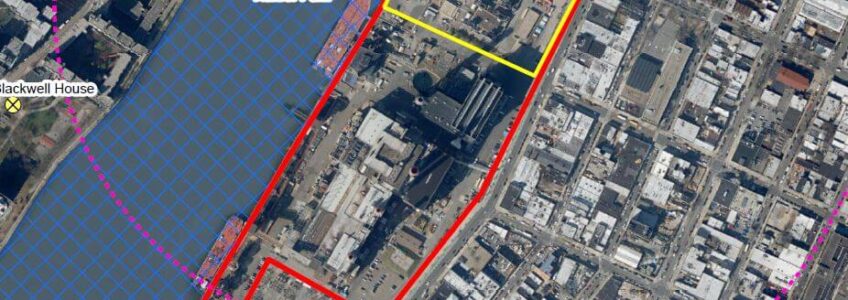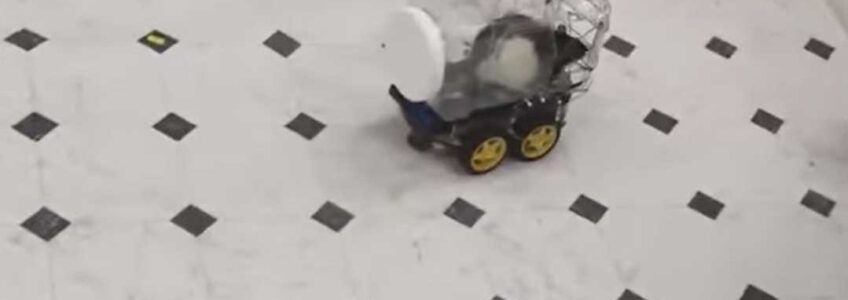Google will stop showing Flash content in search results
Bottom line: Flash usage has slowly decreased over the last few years, as Adobe is preparing to sunset the technology by the end of 2020. Google will now stop indexing Flash content, which isn’t going to have a significant impact, as most websites have already migrated to newer web technologies.Read More
This 10,000mAh power bank claims it can recharge in just 19 minutes
Something to look forward to: Elecjet has been running an Indiegogo campaign for its Apollo Max power bank. Touting graphene-enhanced technology for lower internal resistance and better cooling during use, the power bank can recharge to its 10,000mAh capacity in just 19 minutes and supports plenty of power delivery options via its USB-C port to charge a range of devices.Read More
World’s largest storage battery will replace gas peaker plants in New York
Something to look forward to: The New York Public Service Commission approved a proposal last week to build the world’s largest storage battery in Vernon Ave., Queens, New York. The location was reportedly home to 16 gas powered plants of which only 2 are operational today. Ravenswood Development, the current owner of these peaker plants will head the three-phased project, starting with the demolition of the remaining gas plants to make room for the 316 MW/2,528 MWh storage battery facility.
A proposal (pdf) recently approved by the state’s Public Service Commission (PSC) at Ravenswood’s generating station in Long Island will see the construction of the world’s largest battery storage facility that will help to “offset dirtier resources and enhance New York City’s grid reliability.”
Ravenswood began seeking the approval for this project in February. Once complete, the installed lithium-ion batteries will be able to supply up to a maximum of 8 hours of storage capacity at its rated output and charge/discharge up to 316 MW of power. Read More
Man is still able to remotely control Ford rental five months after returning it
Scientific and technological progress often brings plenty of benefits for the average person, but sometimes, there are unintended consequences. As modern vehicles become more advanced, these consequences have become more clear than ever.
A recent report from Ars Technica highlights some of the issues associated with renting or buying a “connected vehicle” from a third party. In this case, a man named Msamba Sinclair acquired a Ford Expedition from rental service Enterprise back in May. A few days after returning it later that month, Sinclair realized — much to his surprise — that he still had access to the vehicle via the FordPass app, which lets drivers control various aspects of a supported Ford vehicle remotely.
Specifically, Sinclair was able to remotely start or stop the car’s engine, lock or unlock the doors, and track its exact location. To this day (many months later), Sinclair still has access, suggesting that Enterprise (at least, the specific location the vehicle is being rented from) has failed to reset the vehicle’s infotainment system properly upon each new rental.
Sinclair has tried to bring this issue to the attention of Ford, but without any success. His suggestions for fixing the dilemma, submitted via Ford’s “New Ideas” program, were also rejected.
Naturally, this is a massive security risk for connected car users everywhere — Ford is far from the only company that allows for remote systems control. Sinclair might be benevolent enough to draw attention to the matter and avoid abusing his access, but not every driver will be. The potential for bad actors to remotely unlock a vehicle and swipe a new renter’s belongings (or worse) is ever-present.
Ford, for its part, says the infotainment screens of its connected vehicles will display a warning when a device is paired, but as Ars notes, it’s clear that Enterprise workers have failed to see or heed this information over the past several months.
Ford also claims that performing a “Master Reset” — which would unpair connected devices — is part of a “used car checklist” at its own dealerships, which must be followed before the sale of a vehicle. It seems this Enterprise location has a different set of pre-rental protocols.
Regardless, this is an unfortunate situation, and we hope Ford and Enterprise develop a permanent solution moving forward, whether that comes in the form of a software fix from Ford or new pre-rental procedures from Enterprise.
By: Techspot
OmniVision sets Guinness world record for the smallest commercially available image sensor
Forward-looking: OmniVision recently made it into the Guinness Book of World Records for “the smallest commercially available image sensor” called the OV6948. The sensor has a size of 0.575 mm x 0.575 mm, features a 1/36-inch optical format and an image array that can capture 200 x 200 resolution video at up to 30 fps.
OmniVision aims to enhance anatomy procedures with its smallest OV6948 image sensor. Integrated with the company’s OVM6948 CameraCubeChip, a wafer-level camera module measuring just 0.65 x 0.65 mm, the tiny package is meant to offer an ideal solution for disposable endoscopes in the smallest parts of anatomy.
Although the sensor was introduced over two years ago, it set the record based on testing and market research conducted in April this year by Transparency Market Research in Pune, India.
Since heat is a major concern during endoscopy, the sensor’s low power consumption of 25mW ensures that less heat is generated at the tip of the endoscope, improving patient’s comfort and allowing for longer-duration procedures. OmniVision says that the complete module can be integrated into a disposable guidewire, catheter or endoscope with a diameter as small as 1.0 mm.
“With this camera’s small size and high 200 x 200, or 40 KPixel backside-illuminated resolution, high quality images can be captured from within the body’s narrowest blood vessels for neuro, ophthalmic, ENT, cardiac, spinal, urology, gynecology and arthroscopy procedures” the company says.
The module can be operated in temperature ranges of -20 °C to +70 °C, has a focus range of 3 mm to 30 mm, and a wide 120-degree field of view to help with narrow environments.
By: Techspot
Scientists train rats to drive tiny cars and collect food
What just happened? We’ve seen a rat with remarkable culinary skills in Ratatouille, but scientists from the University of Richmond have managed to teach the species an equally useful skill in real life: the art of driving a tiny car.
A team of researchers from the University of Richmond in Virginia, conducted a study in order to determine the cognitive capability of rats, reports NewScientist. While typically known for the ability to recognize objects and work their way around mazes, the research found that rats were not only able to perform the complex task of driving a tiny car but also felt more relaxed when doing so.
Kelly Lambert and her colleagues fashioned the car out of transparent plastic food containers with an aluminium floor, three copper bars and motorized wheels underneath. When a rat was placed inside, it stood on the aluminium floor and completed an electrical circuit when its hands touched the copper bars for steering the car as it propelled forwards.
The rat race included a total of 17 rodents, of which 11 were male and 6 female. Trained to drive in rectangular arenas of up to 4 square meters, the rats navigated their way to a sweet reward of Froot Loops cereal, bits of which were placed around the arena.
“They learned to navigate the car in unique ways and engaged in steering patterns they had never used to eventually arrive at the reward,” said Lambert.
The researchers also claim that learning to drive lowered the rats’ stress levels and relaxed them, similar to the satisfaction which humans feel after acquiring a new skill. “In humans, we call this self-efficacy or agency.” she said.
To support their findings, the researchers studied the levels of two stress-related hormones found in the rats’ poop. During their training, an analysis of their excrement found an increase in the ratio of dehydroepiandrosterone (known to counteract stress) to corticosterone (indicator of stress). Interestingly, the stress level of these rats were also found to be lower than those who’d been driven around as passengers in remote-controlled cars.
“I do believe that rats are smarter than most people perceive them to be, and that most animals are smarter in unique ways than we think,” said Lambert. She also said that this research could benefit Neuropsychiatry by allowing a better understanding of diseases like Parkinson’s on an organism’s motor skills and spatial awareness.
Further experiments by her team would focus on how rats learn to drive, its relation with reducing stress and studying brain areas involved during the activity.
By: Techspot
 Toll Free: 888-88-CADAN
Toll Free: 888-88-CADAN Support
Support Client Login
Client Login





